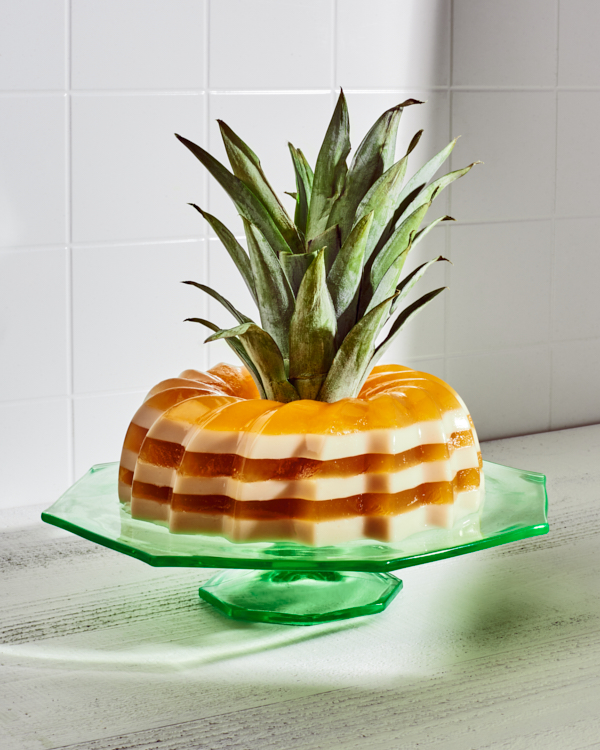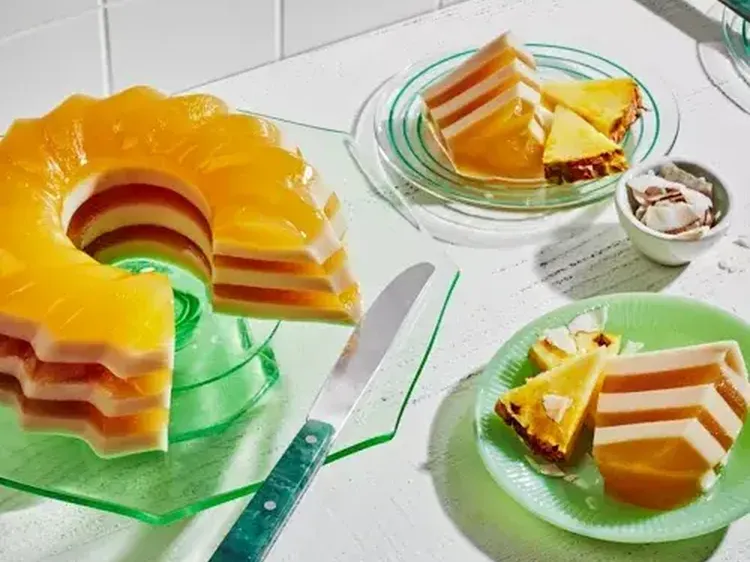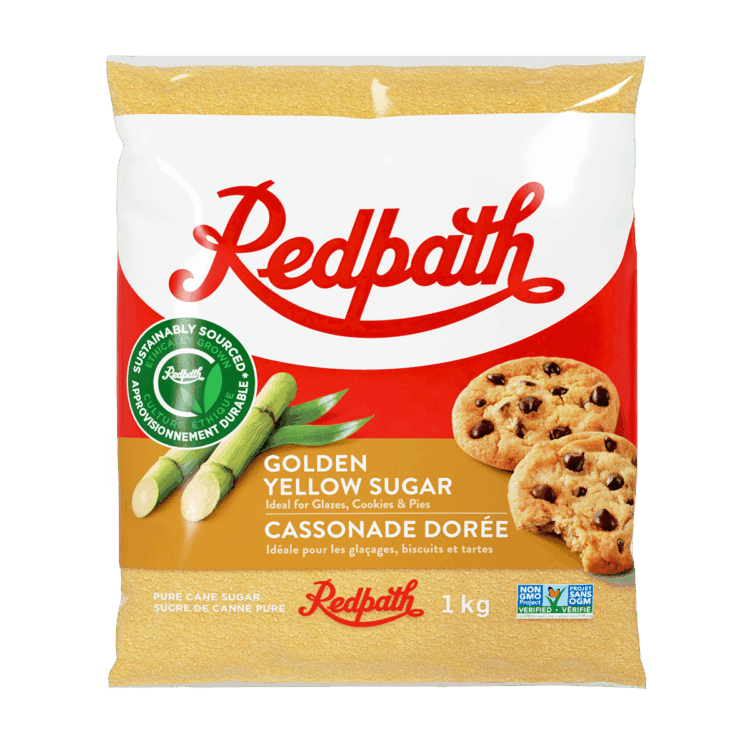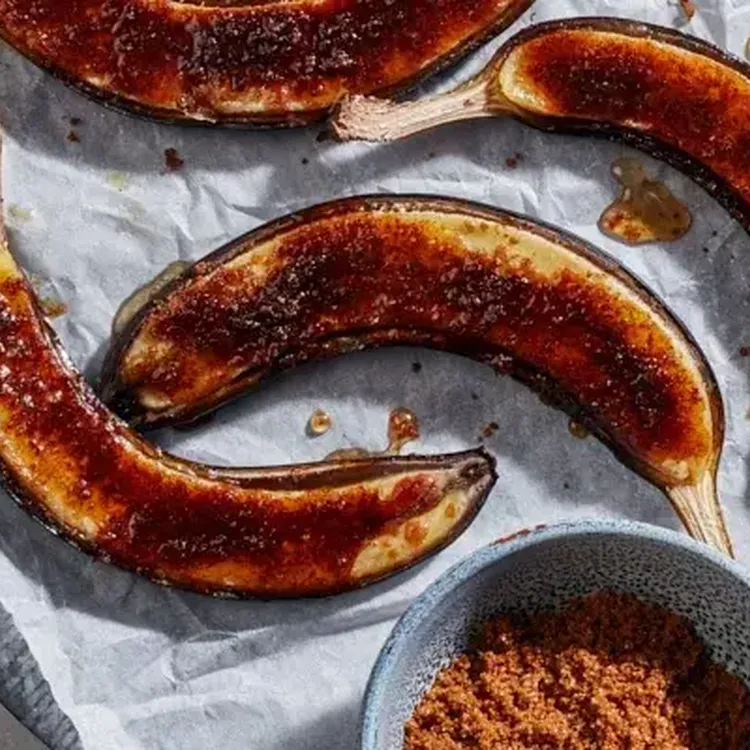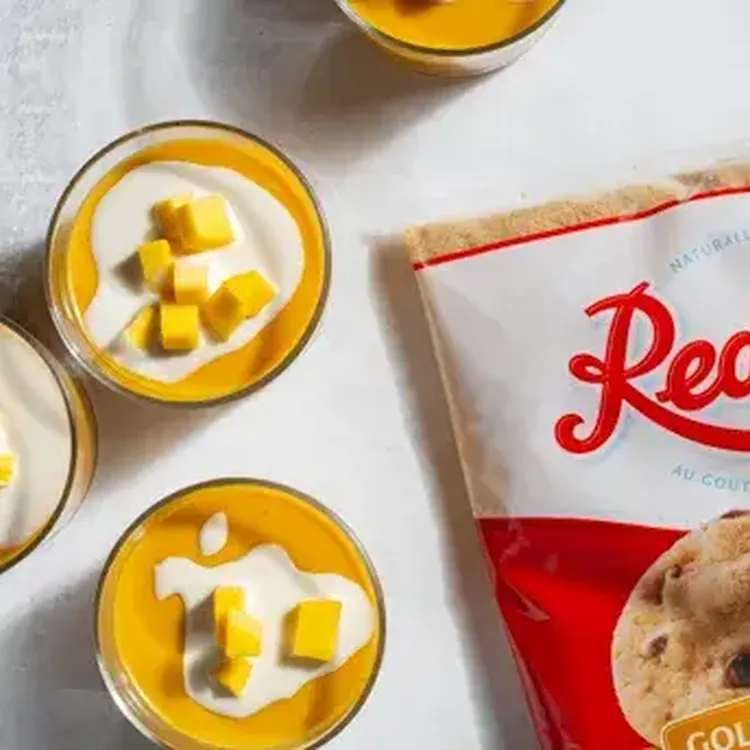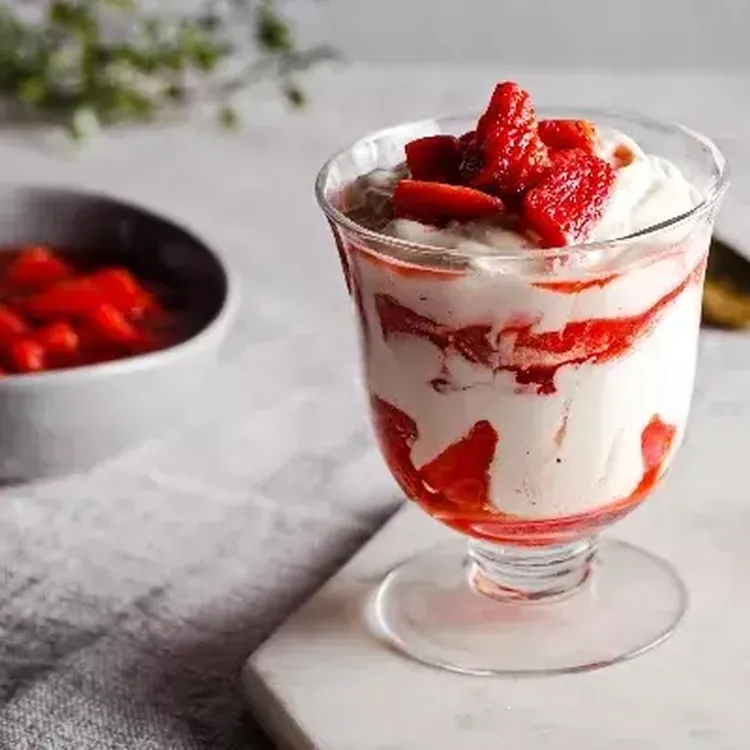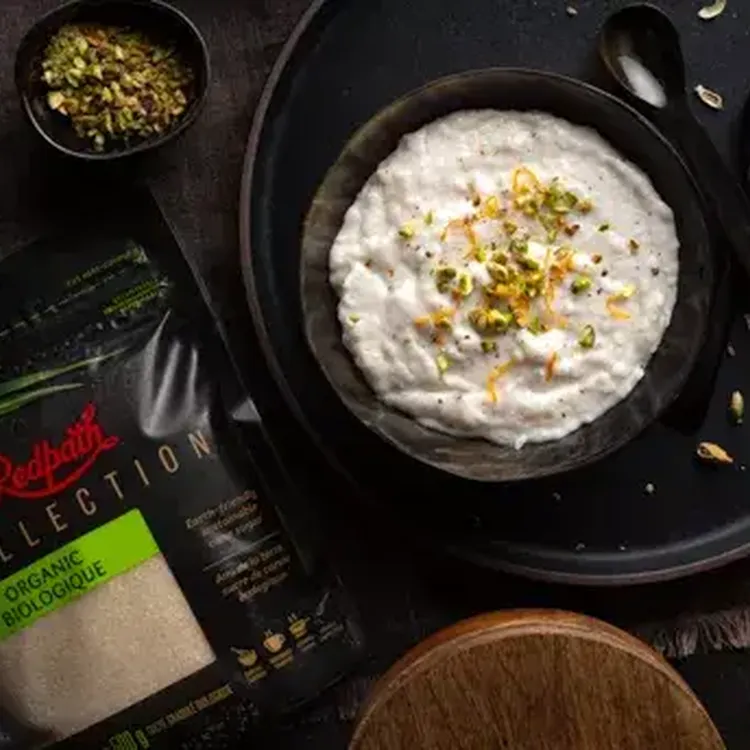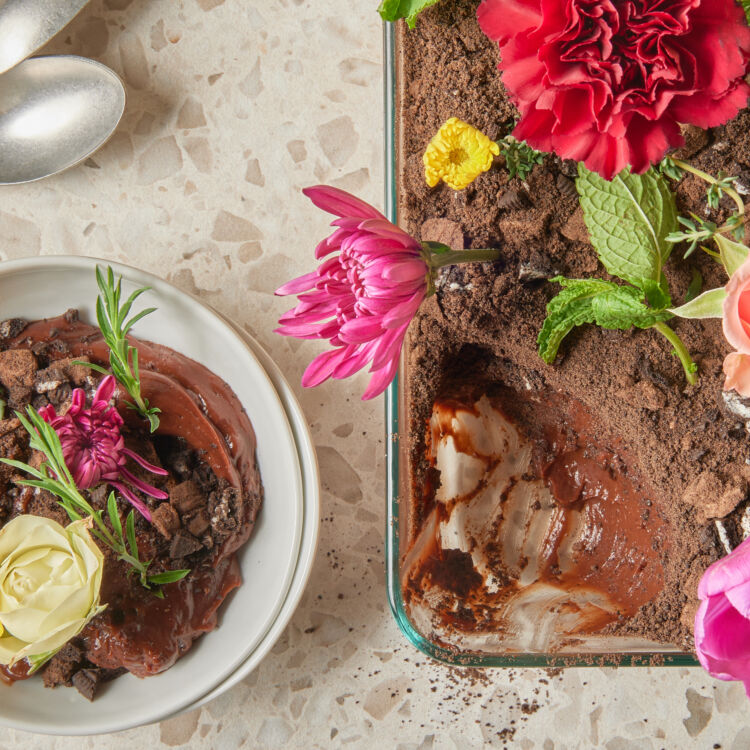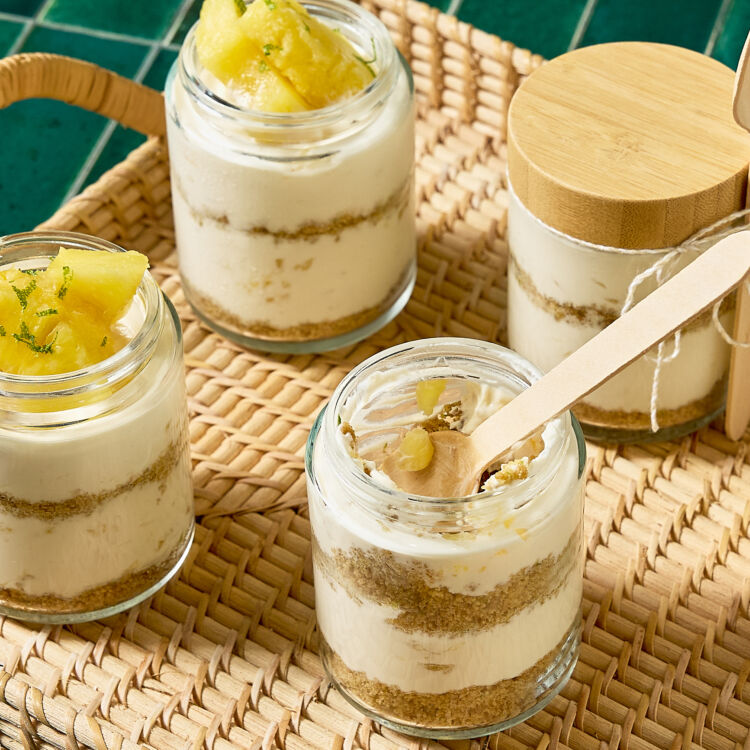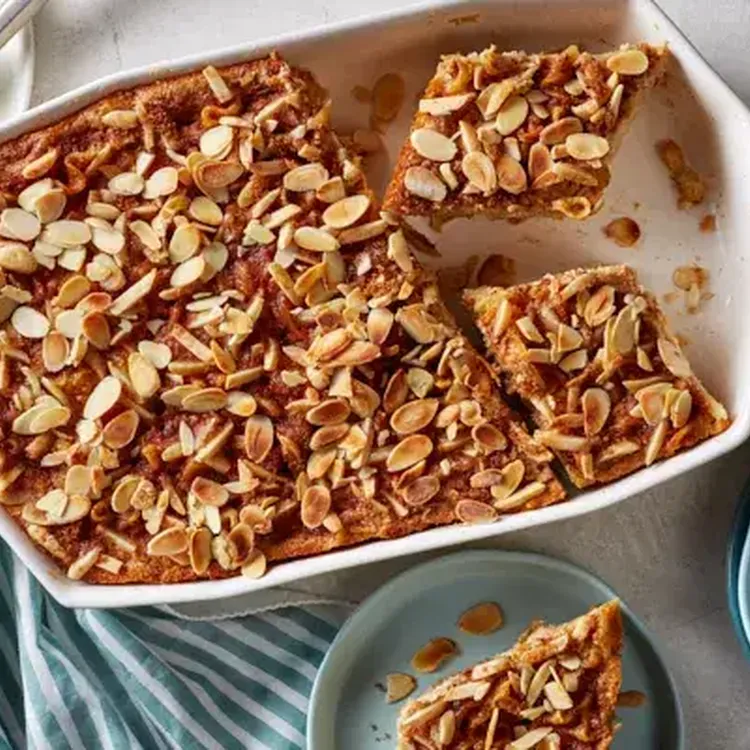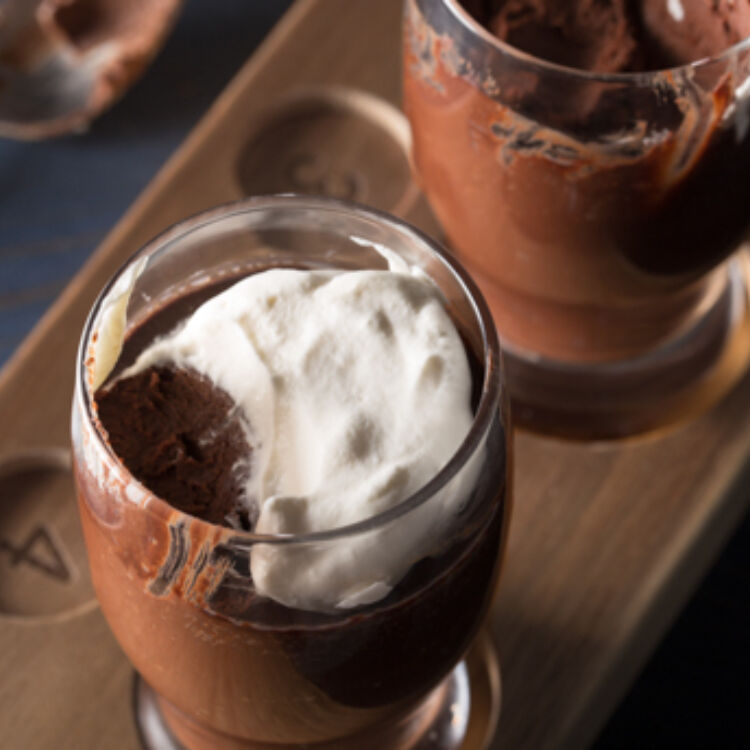Piña Colada Layered Gelatin Dessert
Back to Recipes & MoreInstructions
Step 1
Lightly grease a 6 to 8 cup mould (bowl, bundt pan, gelatin mould) with canola oil, baking spray, or any neutral oil (see Chef’s Tips). Wipe off any excess grease with a paper towel so that only a very thin residue of oil is on the surface.
Step 1
Add the coconut water into a small microwave-safe bowl or measuring cup. Sprinkle the gelatin over the surface of the water, set aside to bloom; 5 minutes.
Step 2
In a small heavy-bottomed saucepan, heat 1 cup (250 ml) of the canned pineapple juice (see Chef’s Tips) with the Redpath® Golden Yellow Sugar until sugar is completely dissolved and juice just begins to simmer. Cover and turn off heat.
Step 3
Place the bloomed gelatin into the microwave and heat at 10-second intervals until gelatin is completely dissolved (approximately 30 seconds). Stir in between heatings.
Step 4
Add the melted gelatin into the hot pineapple juice, mixing well to combine. Add in the remaining cold pineapple juice, stirring well to incorporate.
Step 5
Pour ¾ cup (188 ml) of the pineapple mixture into the prepared mould. Place into the fridge until set but still tacky to the touch (see Chef’s Tips); approximately 45 minutes.
Step 6
Cover remaining pineapple gelatin mixture and leave at room temperature. Stir well before using.
Step 1
Stir together ¼ cup (63 ml) of the coconut milk and the coconut water into a small microwave-safe bowl or measuring cup. Sprinkle the gelatin over the surface of the liquid, set aside to bloom; 5 minutes.
Step 2
In a small heavy-bottomed saucepan, heat the remaining coconut milk with the Redpath® Golden Yellow Sugar over medium heat, stirring to completely dissolve the sugar. Heat until it just begins to simmer; do not boil. Cover and remove from the heat.
Step 3
Place the bloomed gelatin into the microwave and heat at 10-second intervals until gelatin is completely dissolved. Stir in between heatings.
Step 4
Add the melted gelatin into the hot coconut milk, mixing well to combine. Add in the coconut rum, stirring well to incorporate.
Step 5
Ensure coconut mixture is cooled to at least room temperature before adding to the mould.
Step 6
Carefully ladle or pour ¾ cup (188 ml) of the coconut-rum mixture onto the surface of the pineapple layer. Ensure liquid is not being poured entirely in the same spot as this may create a divot on the surface. Place gelatin back into the fridge to chill and set.
Step 7
Cover the remaining coconut-rum gelatin mixture and leave at room temperature until needed. Stir well before using.
Step 8
Repeat steps with half each of the remaining pineapple and coconut-rum mixtures. There will be 3 layers of each flavour in total. As each layer is added, the chilling time will shorten considerably as the mould gets colder and the layer gets thinner (if using a mould that gets wider towards the top); check the consistency of the gelatin every 15 to 20 minutes.
Step 9
Once the final layer (coconut-rum) is added, chill and allow to set for at least 4 hours or overnight. Cover the gelatin with plastic wrap or a lid after an hour in the fridge to prevent any flavours in the fridge from contaminating the gelatin.
Step 10
To unmold, dip the mould up to the rim for 10 seconds into a sink or container full of warm water, being careful not to get the water into the gelatin. Wipe the bottom of the mould. With clean fingers, gently pull the edges of the gelatin away from the sides of the mould or if possible, run a small offset spatula around the gelatin, pressing the spatula against the side of the mould.
Step 11
Place a rimmed plate or desired platter over the mould and carefully flip. Shake gently to unmold.
